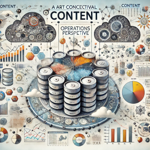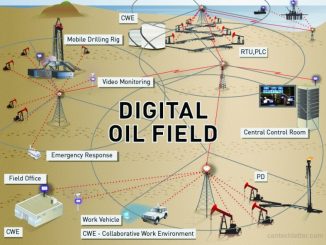
In 2025, the concept of "content" has expanded far beyond its traditional definitions. No longer confined to static pages or isolated databases, content in an operations-centric environment represents the dynamic intersection of meaningful data, actionable insights, and system interconnectivity. As operational environments become increasingly complex, understanding and leveraging content effectively is more important than ever.
What Defines Content Today?
Content is no longer just the "stuff" in systems—it is a holistic representation of meaningful data, its relationships, and its presentation as information. Paraphrasing a 2011 perspective: "Content is the useful information in your system." Fast forward to 2025, and this definition now encompasses:
- Dynamic Interconnections: Data is rarely isolated. Today’s operational systems thrive on interconnected datasets, leveraging both historical and real-time inputs.
- Contextual Relevance: Data gains value when contextualized. Whether spatial, temporal, or relational, context transforms raw data into actionable content.
- Scalable Complexity: With advancements in AI and edge computing, content management systems are designed to handle ever-growing volumes and complexities of data without compromising performance.
Redundancy: An Asset, Not a Liability
In 2025, redundancy in content isn’t just acceptable—it’s vital. From an information theory perspective, redundancy ensures resilience, adaptability, and completeness. Consider weather data: even if wind speed is unavailable, related parameters like pressure and temperature can provide insights. Redundancy acts as a safeguard, enabling systems to infer, adapt, and function even in the absence of certain data points.
The Role of Content Analysis
The importance of content analysis has only grown. This practice, both qualitative and quantitative, has become the cornerstone of operational system design and management. Modern tools allow system designers to not only ask, "What is the purpose of the data?" but also to model the impact of specific content on desired outcomes. This leads to smarter decision-making, better systems, and more reliable results.
To Store or Not to Store?
The dilemma of what data to retain remains a pressing challenge in 2025. While storage costs have plummeted, the complexity and cost of data retrieval have skyrocketed with the explosion of unstructured and redundant data. Advanced content systems now employ machine learning to prioritize data retention based on relevance, utility, and predicted future value, balancing the trade-off between accessibility and storage costs.
Preparing for the Next Frontier
As we look forward, it is clear that the operational definition of content will continue to evolve. Emerging technologies such as quantum computing, autonomous systems, and decentralized data networks will redefine the boundaries of what content is and how it is managed. In this new frontier, the principles of redundancy, contextual relevance, and actionable insight will remain foundational.
The Data-to-Wisdom Paradigm in 2025
The traditional data-information-knowledge-understanding-wisdom hierarchy remains a powerful model for understanding the journey of content transformation. However, advancements in automation and AI are accelerating the transition from raw data to actionable wisdom. For operations professionals, this means more time spent applying insights and less time managing the systems that produce them.
Closing Thoughts
 In conclusion, the content concept has grown into a dynamic, multi-faceted system that supports real-time operations, proactive decision-making, and future preparedness. By embracing content as an evolving asset, operational environments can drive innovation, efficiency, and resilience.
In conclusion, the content concept has grown into a dynamic, multi-faceted system that supports real-time operations, proactive decision-making, and future preparedness. By embracing content as an evolving asset, operational environments can drive innovation, efficiency, and resilience.
Blog by Mark Reynolds, updated December 2024.


